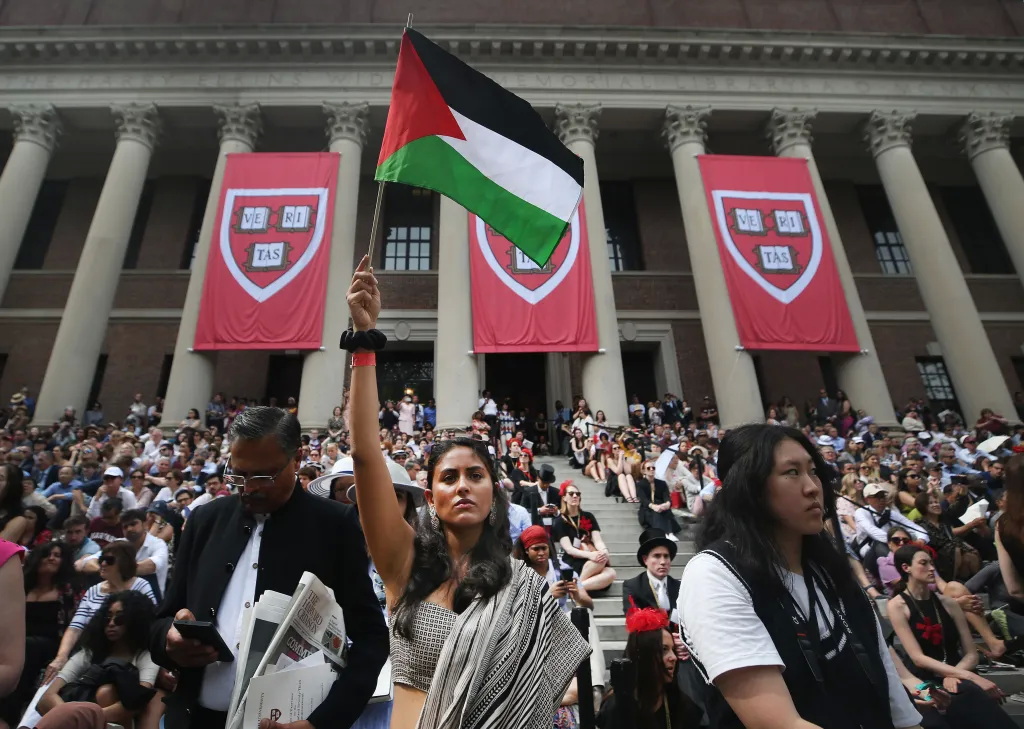The widespread protests by thousands of students across American universities against the oppression of Palestinians by Israel, serve as a stark reminder of the moral responsibilities America must uphold. The student-led protests highlight the necessity to restore the ethical foundations upon which America prides itself.
In his seminal work, “Diplomacy,” Henry Kissinger once wrote that America serves its values best by perfecting democracy at home and becoming a beacon for the rest of mankind. The legitimacy the United States earned through a generational struggle has faced significant scrutiny. The future of America now grapples with the realities of its professed values: free speech, social justice, academic freedom, and pro-people policy decisions.
These protests are a testament to the capacity of students to respond to global events with urgency and compassion. The fervour and commitment of American university students advocating for Palestinian rights reflect a broader trend of youth engagement with social justice issues.
These pro-Palestinian protests are not new but have been fuelled by events over the last two decades, turning their enduring challenges into one of the most devastating humanitarian emergencies, and marked by Israel’s disregard for international laws designed to protect civilians. American university students not only challenge the prevailing narratives but promote a more nuanced understanding of the conflict.
These protests are a testament to the capacity of students to respond to global events with urgency and compassion.
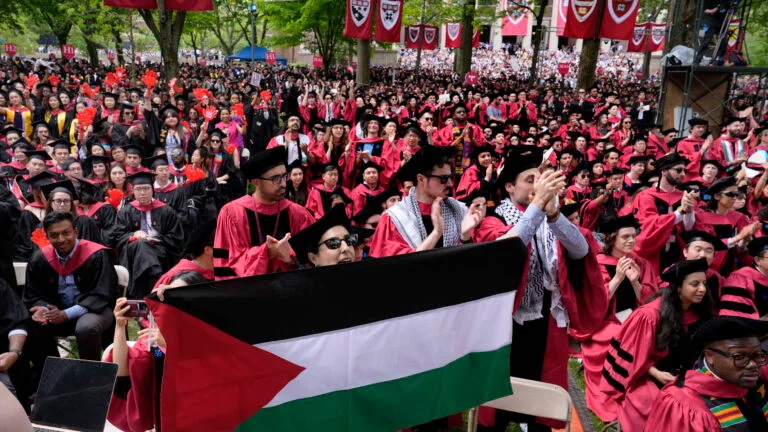
commencement in Harvard Yard at Harvard University, May 23, 2024, in Cambridge, Massachusetts. (AP Photo/Charles Krupa)
The 2014 Gaza conflict, known as Operation Protective Edge, significantly escalated human rights violations and destruction, leading to international condemnation of Israeli actions and solidarity movements in favor of Palestine. Organizations like Students for Justice in Palestine (SJP) became more active, organizing protests, vigils, and educational events to advocate for Palestinian rights. In a similar vein, the “Great March of Return” in 2018, which advocated for the right of return for Palestinian refugees and the lifting of the Gaza blockade, encountered severe violence instigated by the authorities and led to numerous casualties. This galvanized American students, who organized solidarity events and awareness drives to highlight the urgency of addressing the humanitarian situation in Gaza.
In addition to humanitarian concerns, campus activism has brought U.S. policy decisions into the spotlight. The 2017 decision to recognize Jerusalem as the capital of Israel and relocate the U.S. embassy there in 2018 was widely criticized and perceived as undermining prospects for a two-state solution. American university students have outrightly denounced this policy shift and expressed solidarity with Palestinians.
Student advocacy extends beyond raising awareness; it seeks solutions to the conflict. The Boycott, Divest, and Sanction (BDS) movement has gained significant traction on American campuses, calling for universities to divest from companies complicit in human rights abuses against Palestinians. These campaigns face strong opposition, including legislative efforts to restrict BDS activities, accusations of anti-Semitism, threats of disciplinary action, and negative media coverage, all of which have sparked further protests and debates about free speech and academic freedom.
Where would all this lead to: The efficacy of student-led advocacy as a driving force for societal change is underscored by historical evidence. The 1989 China’s Tiananmen Square protests, symbolized by the iconic “Tank Man,” and the Vietnam War era protests, culminating in the Kent State shootings, campuses became hotbeds of anti-war sentient and demonstrated the profound impact of student activism on national policy.
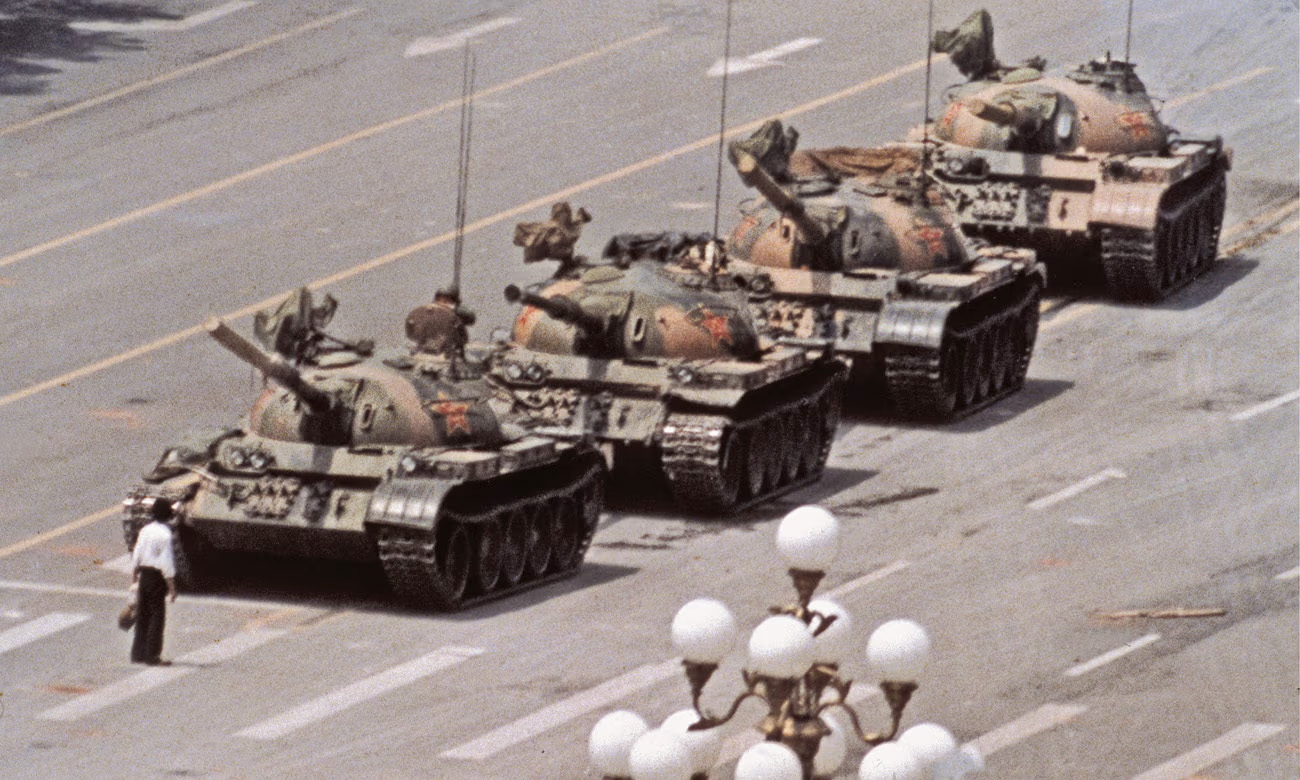
In 1989, the world watched in awe as a lone figure, now known as “Tank Man,” stood defiantly in front of a column of tanks in Tiananmen Square. This iconic image symbolizes the courage and impact of student protests, even in the face of overwhelming force. Though the Chinese government swiftly suppressed the Tiananmen Square protests, the bravery of those students continues to inspire activists globally.
Students in the United States, were instrumental in the fight against racial segregation in the early 20th-century. Student defiance of racial segregation, exemplified by the Greensboro sit-ins of 1960, played a crucial role in the desegregation of public spaces and the passage of the Civil Rights Act of 1964.
From civil rights movements to anti-war demonstrations, student activism has repeatedly challenged the status quo and influenced public opinion and policy. American universities have historically been incubators for political and social debate. Institutions such as the University of California, Berkeley, and Columbia University have led various movements, from free speech to civil rights, providing a unique environment where young minds can engage with complex issues and advocate for change.
The importance of academic freedom cannot be overstated. Universities areplaces where ideas can be freely exchanged, and this freedom is essential for nurturing student activism. However, maintaining neutrality while supporting student voices is challenging for university administrations. Balancing these dynamics is crucial for fostering an environment where activism can thrive. SJP, one of the most active and influential groups, maintains objectivity and adheres to non-violent protest, contributing positively to educational campaigns and awareness-raising efforts aimed at humanizing the conflict and building empathy.

Destruction at Gaza, Reuters: Anas al-Shareef
Students employ creative forms of peaceful protest to advocate for Palestinians. The annual International Day of Solidarity with the Palestinian People, observed on November 29, often has marches and rallies on American campuses.
Educational campaigns, such as hosting speakers, film screenings, and panel discussions, provide a platform for sharing information and perspectives on the conflict. Documentaries like “Five Broken Cameras” and “Gaza Fights for Freedom” are shown on campuses nationwide, followed by discussions with filmmakers or subject matter experts.
At Stanford University, SJP has organized teach-ins and workshops titled “Palestine 101,” featuring presentations by scholars and activists. Harvard University hosted a lecture series with speakers like Palestinian historian Rashid Khalidi and human rights advocates from organizations like Amnesty International.
Interviews with student leaders reveal the motivations driving their activism. Miriam, a senior at the University of California, Berkeley, explains, “Our activism is driven by a deep sense of justice and a commitment to human rights”.

A Harvard protester with a bullhorn let his feelings known yesterday.
(Nancy Lane/Boston Herald)
We believe in the power of peaceful protest to raise awareness and effect change, and we are determined to stand in solidarity with Palestinians.” David, a member of JVP at New York University, emphasizes coalition-building: “Our strength lies in uniting diverse groups around a common cause. By working together, we can amplify our voices and push for meaningful change.”
A distinctive aspect this time was the crucial support from staff and faculty, who came together to bolster the student activism. The involvement of high-profile figures and organizations has also triggered student protest.
Our activism is driven by a deep sense of justice and a commitment to human rights
The digital age has revolutionized the way solidarity is expressed and mobilized. The voice of six-year-old Hind Rajab, before her tragic death, echoed on social media platforms, creating a wave of sympathy among American students and fostering a sense of shared purpose and mutual support. The ability to share real-time updates, impactful stories, and educational content has enabled student activists to reach far beyond their campuses, garnering international attention and support.
Image by Almayadeen
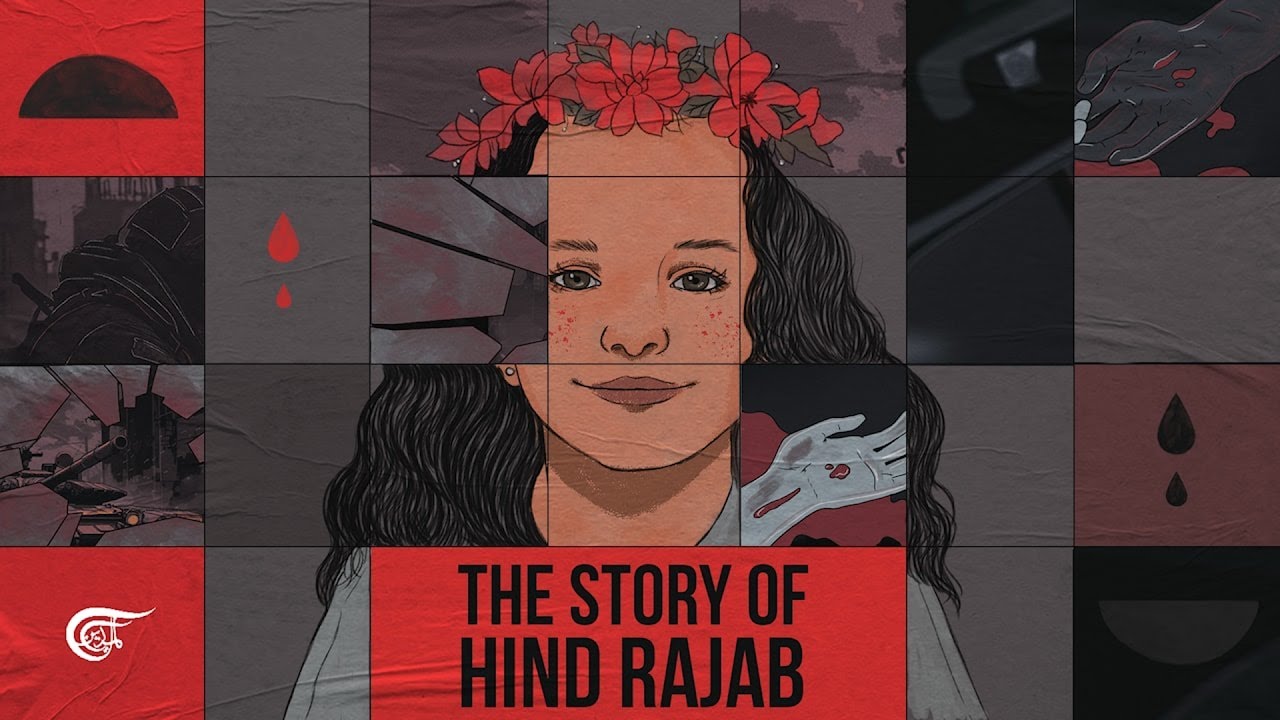
Hind Rajab, a five-year-old Palestinian girl, traveled with her family when Israeli gunfire shattered their peace, killing six family members, including her sister. Hind’s desperate pleas to the Palestine Red Crescent Society were lost after three hours. Twelve days later, rescuers found Hind, her family, and two paramedics lifeless. Her tragic story symbolizes the innocent lives lost in conflict, underscoring the urgent need for peace and protection for the vulnerable.
Public statements and actions by U.S. politicians, celebrities, and international human rights organizations regarding the Israeli-Palestinian conflict have often galvanized students to mobilize and amplify their concerns. As we reflect on the enduring power of student activism, it is crucial to recognize that these movements thrive on collective support and solidarity. The history of social justice movements has consistently demonstrated that the strength of any cause is magnified when diverse groups come together in pursuit of a common goal. Student activism, in particular, draws its vitality from the collaborative efforts of individuals and organizations, each contributing their unique perspectives and resources to the movement.
In this interconnected world, the call for justice in one part of the globe resonates with people in another, creating a ripple effect that can lead to meaningful change. However, solidarity is not just about moral support; it involves tangible actions and key partnerships that amplify the impact of student-led initiatives. Faculty and staff support, as seen in recent protests, adds a layer of legitimacy and authority, encouraging more students to join and sustain the momentum.
Therefore, a collective effort can exert pressure on policymakers, sway public opinion, and ultimately lead to fair and equitable policies.
The enduring power of student activism lies in its ability to unite people across different walks of life towards a shared vision of justice and equality. By acknowledging the significance of collective support and solidarity, we can ensure that these movements not only endure but flourish, fostering meaningful change in our societies.
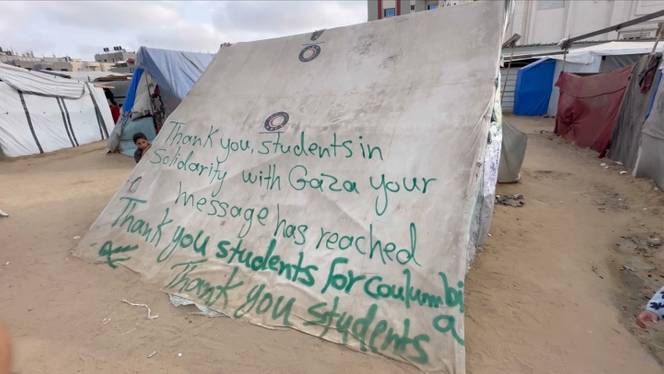
Image credit to AA – TRT World



